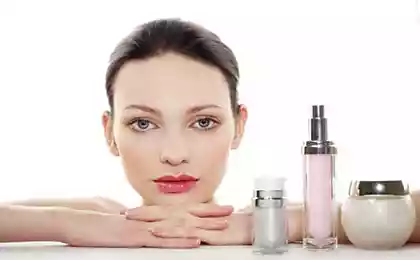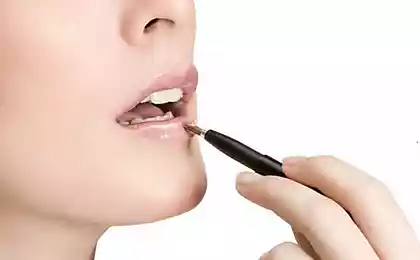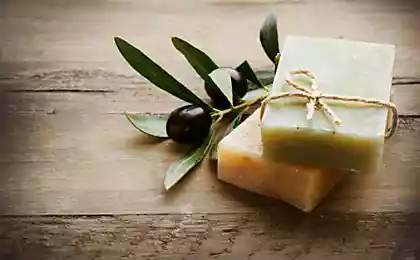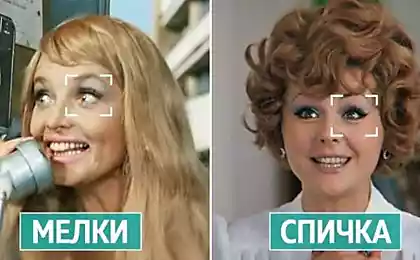597
Baby Care harms children. Look not to fall to the tricks of marketers!
Buying newborn baby baby cosmetics last thing you expect - that the products will be of poor quality and even dangerous for your crumbs. Unfortunately, unscrupulous manufacturers do not stop at nothing - even the health of young children! Today we tell what chemical components fall on infant skin, along with the popular creams and shampoos. Products for children can be very dangerous!
What is contained in cosmetics for children?
1. Heavy metals
Hit the respiratory system, urinary system, the brain.
2. 1, 4-dioxane
The carcinogenic substance that is toxic to the brain, central nervous system, kidneys and liver.
3. Formaldehyde
Carcinogenic substances that can cause inflammation of the mucous membranes of the eyes and respiratory system.
4. Mineral oil
Technical Oil (petrochemical waste), which slows the growth of new cells, dehydrates and reduces the barrier function of the skin, can also cause cancer.
5. Petrolatum
Petrochemical oil, which is getting into the body, prevents the release of toxins and waste, and prevents the skin to breathe fully.
6. Sodium sulfate
About the toxicity of this component are written entire volumes of literature. Thanks lauryl sulfate cosmetic foams well and wash the dirt, but if you use them on a daily basis and in large numbers, poorly washed off with water, the skin is irritated, weakened its protective function. This results in a scaling, dryness, and dandruff.
7. Talc
Seemingly harmless powder that greatly pollutes and dries the skin. However, not everyone knows that talc containing asbestos in its composition, which can cause cancer.
8. Lead acetate
Toxic effects on the liver, kidneys and nervous system.
9. Diethanolamine (DEA)
A known carcinogen that can cause cancer. A negative effect on the skin and brain activity.
10. Propylene glycol
Strong irritant to the skin, which can lead to anomalies in the liver and kidney damage.
11. Parabens
These preservatives may be listed on the label as methyl paraben, ethyl paraben, propyl paraben, butyl paraben, isobutylparaben or E 216. leads to a decrease in muscle mass, can lead to the development of breast cancer and a variety of tumors.
12. Synthetic dyes
Improve the appearance of cosmetic products, however, are very potent carcinogens. On the labels of synthetic dyes are referred to as D & C or FD & C.
13. Synthetic fragrances
Includes up to 200 chemical components, can cause hyperpigmentation, headache, rash, cough, dizziness, vomiting and skin irritations.
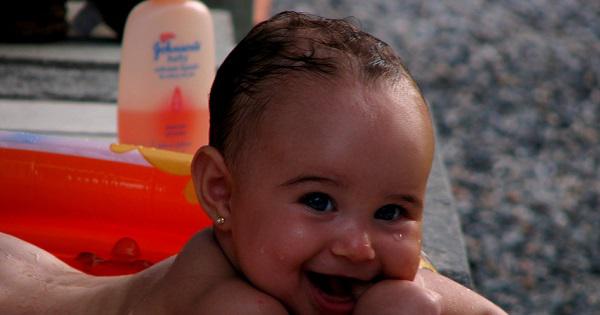
noteworthy that about 89% of imported products that contain the words "recommended by pediatricians," contains the largest number of any harmful chemicals!
What you need to remember, going to the store?
1. Refrain from product selection that seems to be "well-known" and popular. As a rule, well-known brands and brands are spending more money on advertising than on improving the quality of its products.
2. Pay attention to the label with information about the composition of the goods, even if the name is already present with phrases like: «natural», «herbs", "the whole force of nature».
3. To make a purchase, each time verify the composition of the goods (even if you keep the products you use this). Very often the manufacturer (after a certain period of time) is being lured to change the composition.
4. Pay attention to the presence of the press USDA. She says that organic products.
5. If you can not read or speak any component, consider whether you want it to be in the body of your baby.
6. Look for unscented products. One artificial fragrance can contain hundreds of chemicals and to become a major cause of allergic reactions.
7. Pay attention to the order in which the components of the products listed. The first are the ingredients that are most composed. If, for example, calendula extract - the last ingredient in a long list, as part of its means very little.
8. Think about whether you or your child needs all these shampoos, gels, creams, ointments, lotions? This streamlined approach will help preserve not only health, but also the family budget.
The products of Johnson & Johnson can be found in almost every home, from baby shampoos to anti-wrinkle creams. However, the recent spate of critical articles about the dangers of some of the ingredients that make up many consumer goods companies made giant to reconsider its policy. Representatives of Johnson & Johnson pledged that cleanse its products from harmful substances by 2015, so they have to remove a number of potentially harmful chemicals such as formaldehyde and phthalates.
One can only hope that the manufacturers of children's cosmetics will be more conscientious and will cease to harm child's body. Share this article with your friends. What kind of products do you use for kids?
via takprosto cc
What is contained in cosmetics for children?
1. Heavy metals
Hit the respiratory system, urinary system, the brain.
2. 1, 4-dioxane
The carcinogenic substance that is toxic to the brain, central nervous system, kidneys and liver.
3. Formaldehyde
Carcinogenic substances that can cause inflammation of the mucous membranes of the eyes and respiratory system.
4. Mineral oil
Technical Oil (petrochemical waste), which slows the growth of new cells, dehydrates and reduces the barrier function of the skin, can also cause cancer.
5. Petrolatum
Petrochemical oil, which is getting into the body, prevents the release of toxins and waste, and prevents the skin to breathe fully.
6. Sodium sulfate
About the toxicity of this component are written entire volumes of literature. Thanks lauryl sulfate cosmetic foams well and wash the dirt, but if you use them on a daily basis and in large numbers, poorly washed off with water, the skin is irritated, weakened its protective function. This results in a scaling, dryness, and dandruff.
7. Talc
Seemingly harmless powder that greatly pollutes and dries the skin. However, not everyone knows that talc containing asbestos in its composition, which can cause cancer.
8. Lead acetate
Toxic effects on the liver, kidneys and nervous system.
9. Diethanolamine (DEA)
A known carcinogen that can cause cancer. A negative effect on the skin and brain activity.
10. Propylene glycol
Strong irritant to the skin, which can lead to anomalies in the liver and kidney damage.
11. Parabens
These preservatives may be listed on the label as methyl paraben, ethyl paraben, propyl paraben, butyl paraben, isobutylparaben or E 216. leads to a decrease in muscle mass, can lead to the development of breast cancer and a variety of tumors.
12. Synthetic dyes
Improve the appearance of cosmetic products, however, are very potent carcinogens. On the labels of synthetic dyes are referred to as D & C or FD & C.
13. Synthetic fragrances
Includes up to 200 chemical components, can cause hyperpigmentation, headache, rash, cough, dizziness, vomiting and skin irritations.

noteworthy that about 89% of imported products that contain the words "recommended by pediatricians," contains the largest number of any harmful chemicals!
What you need to remember, going to the store?
1. Refrain from product selection that seems to be "well-known" and popular. As a rule, well-known brands and brands are spending more money on advertising than on improving the quality of its products.
2. Pay attention to the label with information about the composition of the goods, even if the name is already present with phrases like: «natural», «herbs", "the whole force of nature».
3. To make a purchase, each time verify the composition of the goods (even if you keep the products you use this). Very often the manufacturer (after a certain period of time) is being lured to change the composition.
4. Pay attention to the presence of the press USDA. She says that organic products.
5. If you can not read or speak any component, consider whether you want it to be in the body of your baby.
6. Look for unscented products. One artificial fragrance can contain hundreds of chemicals and to become a major cause of allergic reactions.
7. Pay attention to the order in which the components of the products listed. The first are the ingredients that are most composed. If, for example, calendula extract - the last ingredient in a long list, as part of its means very little.
8. Think about whether you or your child needs all these shampoos, gels, creams, ointments, lotions? This streamlined approach will help preserve not only health, but also the family budget.
The products of Johnson & Johnson can be found in almost every home, from baby shampoos to anti-wrinkle creams. However, the recent spate of critical articles about the dangers of some of the ingredients that make up many consumer goods companies made giant to reconsider its policy. Representatives of Johnson & Johnson pledged that cleanse its products from harmful substances by 2015, so they have to remove a number of potentially harmful chemicals such as formaldehyde and phthalates.
One can only hope that the manufacturers of children's cosmetics will be more conscientious and will cease to harm child's body. Share this article with your friends. What kind of products do you use for kids?
via takprosto cc
This simple dish worthy of the royal table: a delicious baked potato with egg.
7 breakfast harmful to our body. Take care of your health!






